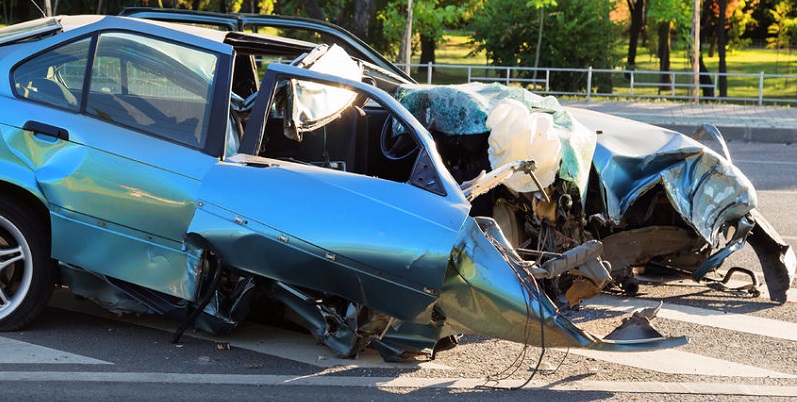At least 642 people died in car accidents on Colorado streets in 2017, a 42 percent increase from 2010. Drugs and alcohol played a part in 37 percent of those deaths.
Numbers Track Impaired Driving, Deadly Counties
It’s hard to keep track of the rising tide of death on the streets, roads, and highways crisscrossing Colorado’s 64 counties. Even in February, the state agency in charge of keeping the death tally was revising its grim figures from the previous year, upward, of course.
At least 642 people died from Colorado auto accidents in 2017, a 42 percent increase from 2010, according to figures released by the Colorado Department of Transportation on Feb. 12, 2018. The agency compiles statistics from the Colorado State Patrol, local sheriffs’ offices, police departments, and coroners’ offices. Some results take added time as officials await toxicology reports on drivers suspected of being under the influence of drugs or alcohol at the time of the crashes.
Those toxicology results are playing an increasing role as Colorado public safety and transportation officials try to make sense of the rising mortality of driving in this state.
Impaired driving played a role in 238 (37 percent) of the 642 deaths last year, the statistics show. Year-to-year comparisons of such figures can be tricky because of changes in testing methods and investigators’ efforts to test living and dead drivers. Nevertheless, they show a remarkably consistent and substantial effect of drugs and alcohol:
- 2017, 37 percent impaired
- 2016, 31 percent
- 2015, 33 percent
- 2014, 34 percent
- 2013, 33 percent
- 2012, 31 percent
- 2011, 27 percent
- 2010, 35 percent.
Deadliest Colorado Counties for Driving
When it comes to deadly accidents, location may be merely a factor of population concentration or, you can speculate, other circumstances, like road conditions, speed limits, or local people’s driving habits.
These 13 counties each had more than 10 traffic deaths in 2017; many of which involved drivers impaired by drugs or alcohol:
- El Paso 70 fatal accidents resulting in 77 deaths; 25 fatal accidents with impaired drivers, resulting in 29 deaths.
- Weld 61 fatal accidents resulting in 66 deaths; 20 fatal accidents with impaired drivers, resulting in 24 deaths.
- Adams 60 fatal accidents, resulting in 64 deaths; 24 impaired drivers; 25 resulting deaths.
- Denver 48 fatal accidents, 49 deaths; 21 impaired drivers; 22 resulting deaths.
- Arapahoe 42 fatal accidents, 45 deaths; 16 impaired drivers; 16 resulting deaths.
- Jefferson 36 fatal accidents, 42 deaths; 12 impaired drivers; 17 resulting deaths.
- Larimer 35 fatal accidents; 36 deaths; 18 impaired drivers; 18 resulting deaths.
- Pueblo 33 fatal accidents; 34 deaths; 11 impaired drivers; 11 resulting deaths.
- Boulder 27 fatal accidents, 30 deaths; 4 impaired drivers; 5 resulting deaths.
- Douglas 18 fatal accidents, 18 deaths; 5 impaired drivers; 5 resulting deaths.
- Garfield 16 fatal accidents; 21 resulting deaths; 5 impaired drivers; 5 resulting deaths.
- Mesa 15 fatal accidents; 16 resulting deaths; 9 impaired drivers; 9 resulting deaths.
- Morgan 12 fatal accidents; 13 deaths; 2 impaired drivers; 2 resulting deaths.
- La Plata 9 fatal accidents; 11 deaths; 3 impaired drivers; 4 resulting deaths.
Five Colorado municipalities tallied more than 10 traffic fatalities: Denver, 49; Colorado Springs, 39; Aurora, 25; Pueblo, 16; and Thornton, 11.
How Do You Combat Car Accident Deaths?
How do you stop a surge of deaths in a small town or rural county? You get its residents to buckle up, obey traffic laws, and stop speeding. You tell people to put their cell phones down and get them to give up their keys when they’re drunk or high.
Law enforcers in Colorado Springs and surrounding El Paso County, which saw record death rates in 2017, are adding another strategy: promoting regard for human life. That’s according to a report by KDRO TV reporter Scott Harrison.
Colorado Springs Police Department’s Major Accident Unit responded to 90 accidents in 2017, Sgt. Jim Stinson said. He said he finds it hard to believe that some of the victims survived those horrific crashes. It’s also disturbing, he said, that nearly one-third of the deaths were pedestrians (10) or bicyclists (3). He blames distracted driving, speeding, drugs and alcohol, and the failure to wear proper restraints for the many deaths.
Stinson said:
“We also need drivers to be more considerate and compassionate. That would help reduce fatalities. Until drivers start doing that, I’m afraid we’re going to see more fatalities.”

